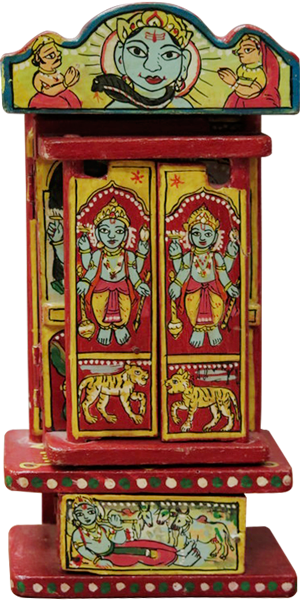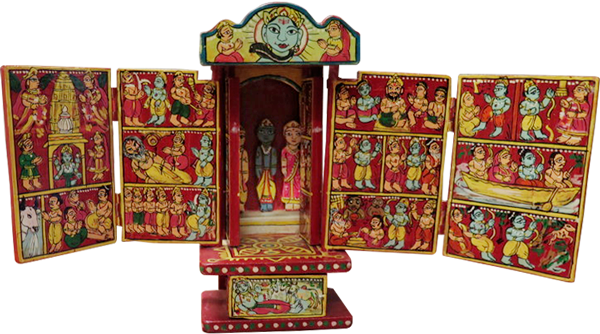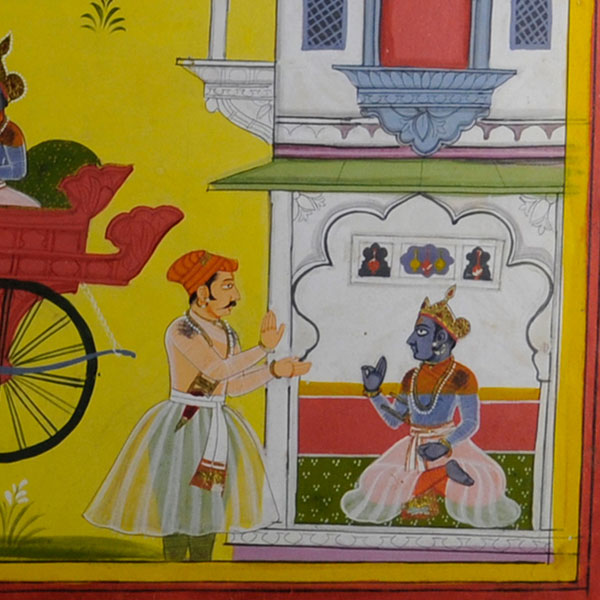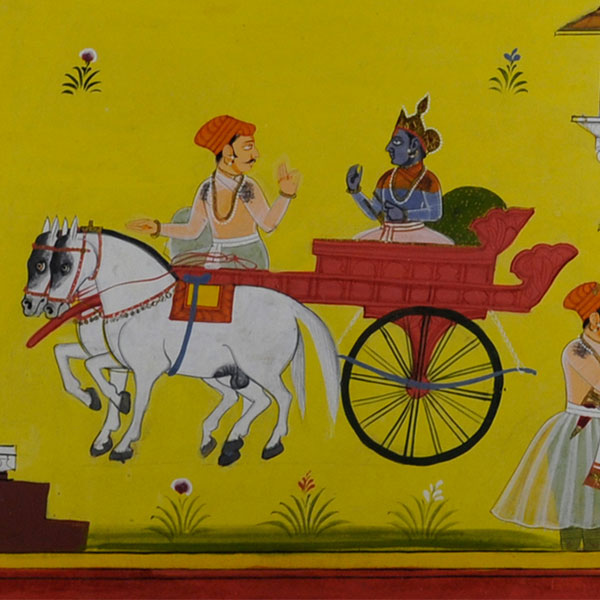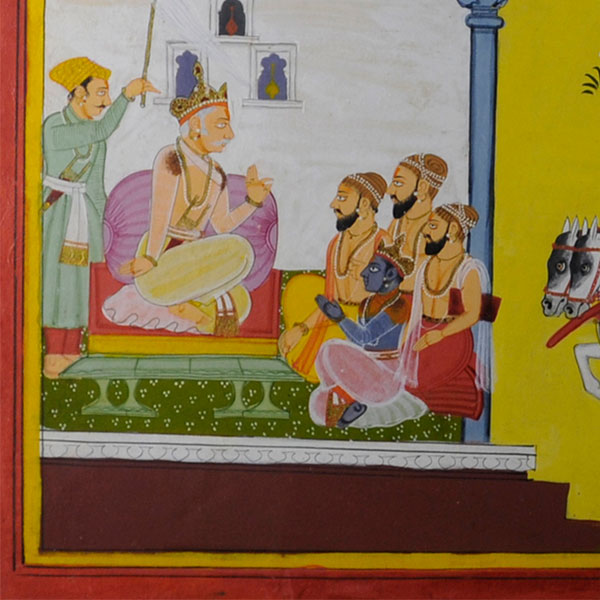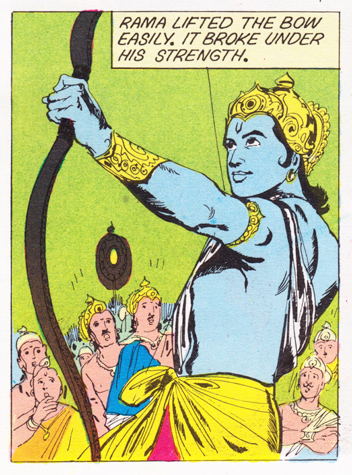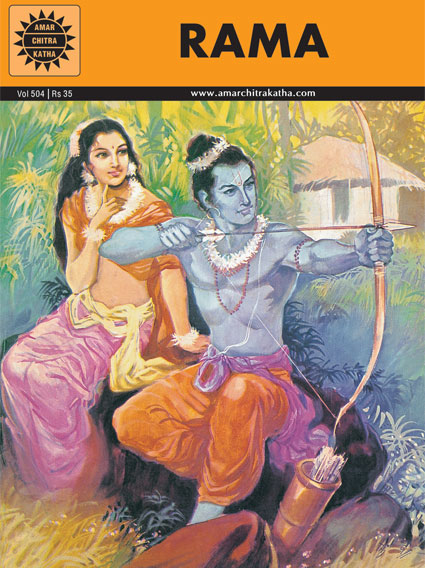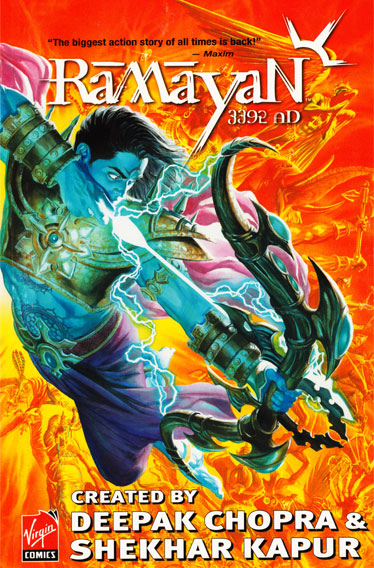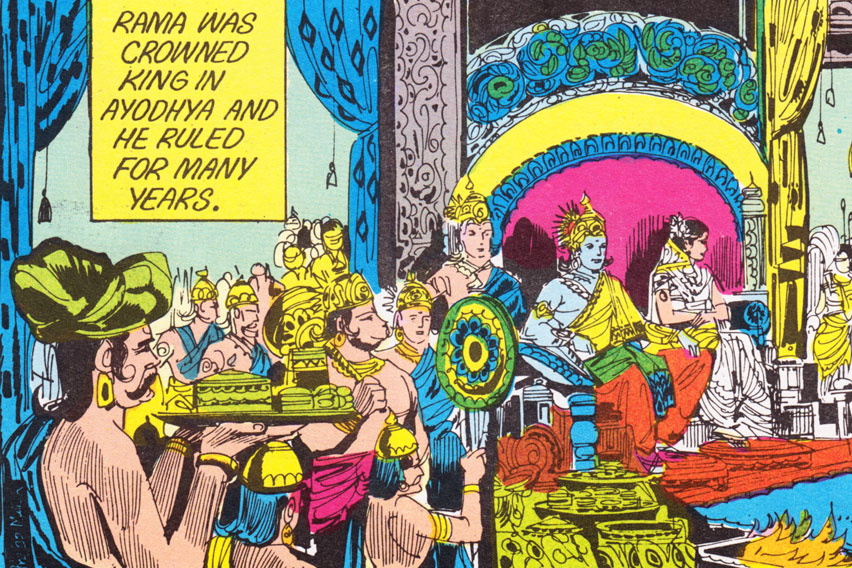The great Indian epic, the Ramayana , has captivated the imaginations of children and adults for over two thousand years. In the story, the Hindu god Vishnu must take human form on earth as Rama, a prince from the kingdom of Ayodhya, in order to defeat the ten-headed demon Ravana. On his many adventures Rama is accompanied by his brother, Lakshmana , and his devoted wife, Sita , and aided by his devoted friend and helpmate Hanuman , the monkey god. Though it is an exciting story in which a handsome hero, who has been denied his rightful place as king, embarks on a quest to vanquish a villain who has imprisoned his beloved wife, the Ramanyana is much more than just an adventure story. The Ramayana embodies many of the ideals of Hindu culture — Rama, the ideal king; Sita, the ideal wife; the relationship between Rama and Lakshmana, ideal brotherhood; and Hanuman, the ideal Hindu devotee. For centuries, the epic has been used to explore and to teach Hindu conceptions of morality and exemplary human behavior.
From as early as the 10th century, painted versions of the story were created, first on palm leaves and later on paper. These paintings were not framed and hung on the wall, but were kept in albums and brought out at small gatherings where the stories and their teachings, as well as the beauty and the remarkable detail of the paintings, could be discussed and enjoyed.
Select any of the paintings here from the Carlos Museum’s collection to learn more.
Indian miniature paintings, which were created by artists employed by royalty and the very wealthy, are just one way that the stories of the Ramayana were shared. The visual power of these stories has always contributed to their popularity across economic and social classes. In some parts of India, traditional storytellers held up scroll paintings that illustrated the tales as they recited them. In northwest India, the folding doors of storytelling boxes depicted episodes from the Ramayana and hid the images of Rama, Lakshmana, and Sita until they were revealed by opening the interior doors of the box at the end of the recitation.
